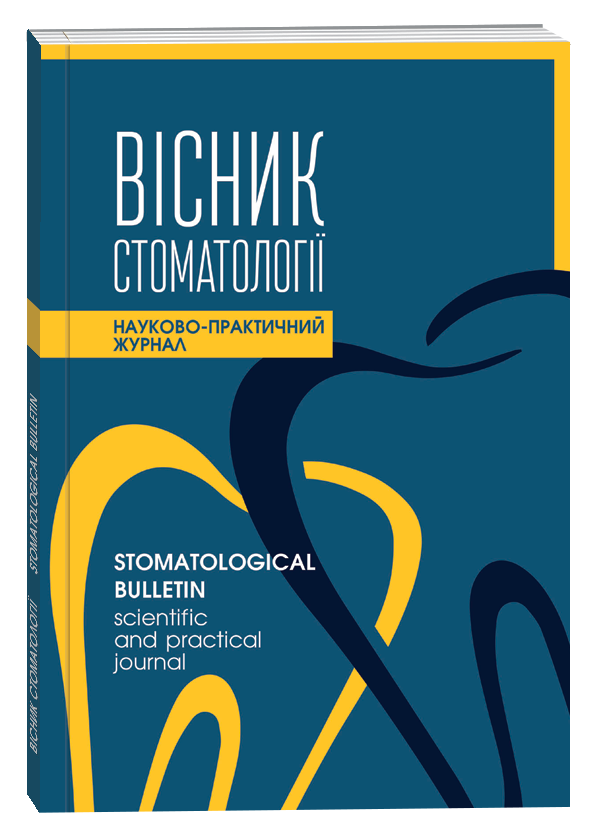ON THE ISSUE OF COMPLEX TREATMENT OF CHILDREN WITH CONGENITAL CLEFT UPPER LIP AND PALATE
DOI:
https://doi.org/10.35220/2078-8916-2023-47-1.4Keywords:
congenital cleft, upper lip, palate, syndrome, treatment.Abstract
The article deals with the issues of complex treatment of congenital cleft upper lip and palate. Congenital cleavage can be isolated or connected. Isolated forms of cleavage are considered by some doctors to be mild forms of malformation. But this is not quite the right idea. Operating on such a patient with a good stable result is a very difficult thing. Patients with conjugated forms of the defect are another very large group of patients whose clinical features and xxxxx functional characteristics differ from the isolated form of the defect. Such patients need a different approach to surgical intervention and rehabilitation process. Very special are patients with so-called syndromic diagnoses, in which one of the symptoms of this disease is a congenital cleft upper lip and palate. The management of such patients is very complex. In this group of patients, the surgeon should always cooperate with other specialists involved in the treatment of these patients, and plan treatment together with them. Another feature of patients with congenital cleft upper lip and palate is that they most often have physical development disorders, visual disorders, ENT organs and other organs and systems of the child's body. These disorders should be identified and taken into account when planning surgical interventions and rehabilitation of patients. When a child is born with a congenital cleft upper lip and palate, family disorders are common in the family. Conduct conversations with parents and explain that these shortcomings can be eliminated. And if you combine the efforts of doctors and parents in the rehabilitation of such patients, the effect will be the best. Another aspect of this problem is a violation of the maxillary system, the oral mucosa, and the development of dental caries. Such patients should be treated in specialized centers where a maxillofacial surgeon, pediatric dentists, orthodontists, and orthopedic dentists are available. And most importantly, in the treatment of this group of children, there should be such a thing as a school. This concentrates a sequence of steps in planning surgical interventions, examinations, and rehabilitation activities that will take into account all of the above aspects.
References
Regezi, J.A., Sciubba, J.J., & Jordan, RCK. (2008). Oral Pathology: Clinical Pathologic Correlations, 5th ed. Saunders.
El-Kehdy, J., Abbas, O., & Rubeiz, N. (2012). A review of Parry-Romberg syndrome. J Am Acad Dermatol; 67: 769-784 doi: 10.1016/j.jaad.2012.01.019.
App, J.P., Eversole, L.R., & Wysocki, G.P. (2004). In Contemporary Oral and maxillofacial Pathology. 2nd ed. Mosby St. Louis
Duarte, G., Ramos, R., & Cardoso, M. (2016). Feeding methods for children with cleft lip and/or palate: a systematic review. Braz J Otorhinolaryngol, 82:602-609 doi: 10.1016/j.bjorl.2015.10.020.
Kosowski, T.R., Weathers, W.M., Wolfswinkel, E.M., & Ridgway, E.B. (2012). Cleft Palate. Semin Plast Surg; 26:164-169 doi: 10.1055/s-0033-1333883.
Kati, F. A. (2018). Cleft Lip And Palate: Review Article. World j pharm med res, 4:155-163.
Mosahebi, A., & Kangesu, L. (2006). Cleft lip and palate. Surgery (Oxford), 24, 33-37.
Beumer J, Marunick M, & Esposito S. (Ed.) (2011). Maxillofacial Rehabilitation: Prosthodontic and Surgical Management of Cancer – Related, Acquired, and Congenital Defects of Head and Neck.
Muhamad, A.H., Azzaldeen, A., & Watted, N. (2014). Cleft lip and palate; A comprehensive review. Int J App Basic Med Res, 4:338-355. 11. Van Aalst, J.A., Kolappa, K.K., & Sadove, M. (2008). MOC-PSSM CME article: Nonsyndromic cleft palate. Plast Reconstr Surg, 121, 1-14. 12. Allam, E., & Stone, C. (2014). Cleft Lip and Palate: Etiology, Epidemiology, Preventive and Intervention Strategies. Anat Physiol, 4, 150. 13. Paliobei, V., Psifidis, A., & Anagnostopoulos, D. (2005). Hearing and speech assessment of cleft palate patients after palatal closure. Long-term results. Int J Pediatr Otorhinolaryngol, 69, 1373-1381.
Figueiredo D, Cardinal L, Bartolomeo F, Palomo M, Horta C, Andrade I, & et al. (2016). Effects of rapid maxillary expansion in cleft patients resulting from the use of two different expanders. Dental Press J Orthod, 21, 82-90.









